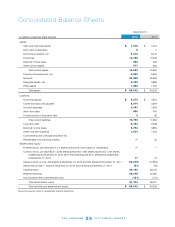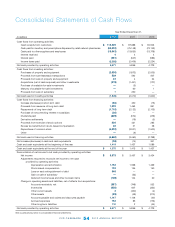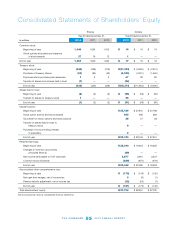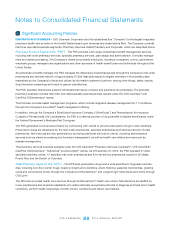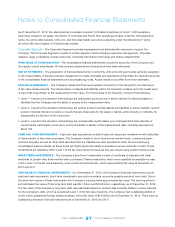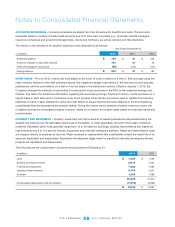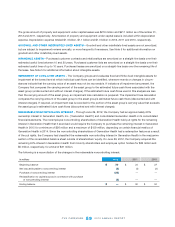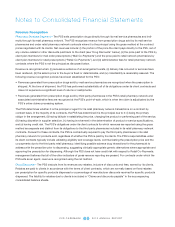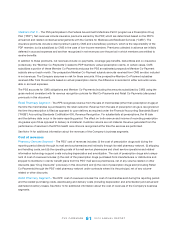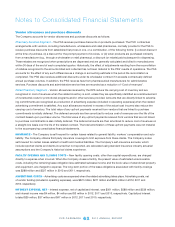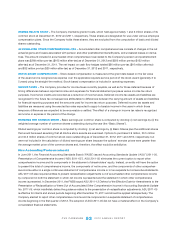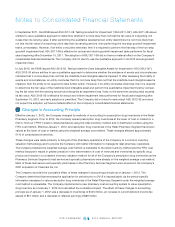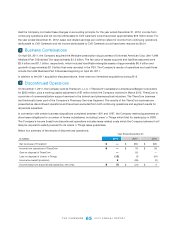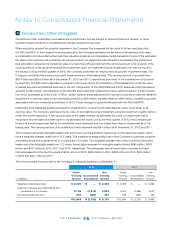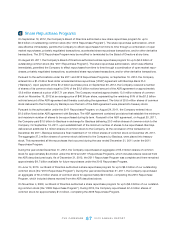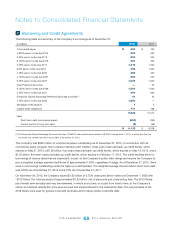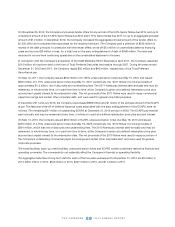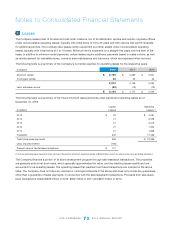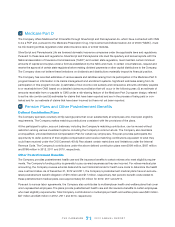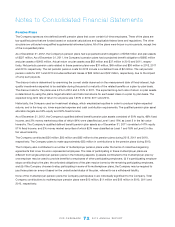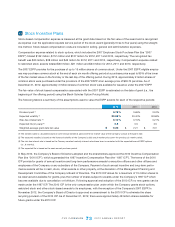CVS 2012 Annual Report Download - page 65
Download and view the complete annual report
Please find page 65 of the 2012 CVS annual report below. You can navigate through the pages in the report by either clicking on the pages listed below, or by using the keyword search tool below to find specific information within the annual report.CVS CAREMARK 2012 ANNUAL REPORT
63
SHARES HELD IN TRUST – The Company maintains grantor trusts, which held approximately 1 and 2 million shares of its
common stock at December 31, 2012 and 2011, respectively. These shares are designated for use under various employee
compensation plans. Since the Company holds these shares, they are excluded from the computation of basic and diluted
shares outstanding.
ACCUMULATED OTHER COMPREHENSIVE LOSS – Accumulated other comprehensive loss consists of changes in the net
actuarial gains and losses associated with pension and other postretirement benefit plans, and unrealized losses on deriva-
tives. The amount included in accumulated other comprehensive loss related to the Company’s pension and postretirement
plans was $268 million pre-tax ($165 million after-tax) as of December 31, 2012 and $250 million pre-tax ($152 million
after-tax) as of December 31, 2011. The net impact on cash flow hedges totaled $26 million pre-tax ($16 million after-tax)
and $32 million pre-tax ($20 million after-tax) as of December 31, 2012 and 2011, respectively.
STOCK-BASED COMPENSATION – Stock-based compensation is measured at the grant date based on the fair value
of the award and is recognized as expense over the applicable requisite service period of the stock award (generally 3 to
5 years) using the straight-line method. Stock-based compensation is included in operating expenses.
INCOME TAXES – The Company provides for income taxes currently payable, as well as for those deferred because of
timing differences between reported income and expenses for financial statement purposes versus income tax return
purposes. Income tax credits are recorded as a reduction of income taxes. Deferred income tax assets and liabilities are
recognized for the future tax consequences attributable to differences between the carrying amount of assets and liabilities
for financial reporting purposes and the amounts used for income tax return purposes. Deferred income tax assets and
liabilities are measured using the enacted tax rates expected to apply to taxable income in the years in which those
temporary differences are expected to be recoverable or settled. The effect of a change in income tax rates is recognized
as income or expense in the period of the change.
EARNINGS PER COMMON SHARE – Basic earnings per common share is computed by dividing: (i) net earnings by (ii) the
weighted average number of common shares outstanding during the year (the “Basic Shares”).
Diluted earnings per common share is computed by dividing: (i) net earnings by (ii) Basic Shares plus the additional shares
that would be issued assuming that all dilutive stock awards are exercised. Options to purchase 5.9 million, 30.5 million
and 34.3 million shares of common stock were outstanding as of December 31, 2012, 2011 and 2010, respectively, but
were not included in the calculation of diluted earnings per share because the options’ exercise prices were greater than
the average market price of the common shares and, therefore, the effect would be antidilutive.
New Accounting Pronouncements
In June 2011, the Financial Accounting Standards Board (“FASB”) issued Accounting Standards Update (“ASU”) 2011-05,
Presentation of Comprehensive Income
(“ASU 2011-05”). ASU 2011-05 eliminates the current option to report other
comprehensive income and its components in the statement of shareholders’ equity. Instead, an entity will have the option
to present the total of comprehensive income, the components of net income, and the components of other comprehen-
sive income either in a single continuous statement of comprehensive income or in two separate but consecutive statements.
ASU 2011-05 also required entities to present reclassification adjustments out of accumulated other comprehensive income
by component in both the statement in which net income is presented and the statement in which other comprehensive
income is presented. In December 2011, the FASB issued ASU 2011-12
Deferral of the Effective Date for Amendments to the
Presentation of Reclassification of Items Out of Accumulated Other Comprehensive Income in Accounting Standards Update
No. 2011-05
, which indefinitely defers the guidance related to the presentation of reclassification adjustments. ASU 2011-05
is effective for interim and annual periods beginning after December 15, 2011 and should be applied retrospectively. The
Company elected to report other comprehensive income and its components in a separate statement of comprehensive
income beginning in the first quarter of 2012. The adoption of ASU 2011-05 did not have a material effect on the Company’s
consolidated financial statements.


